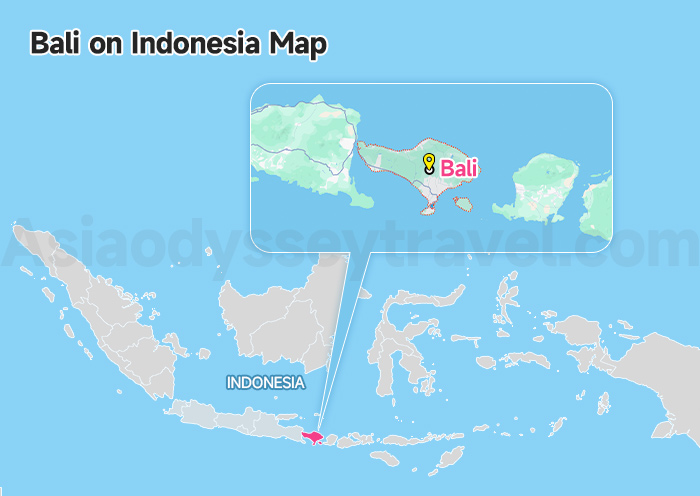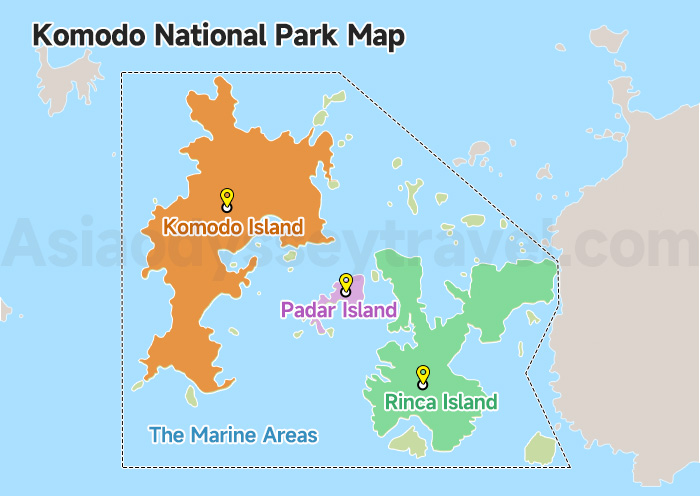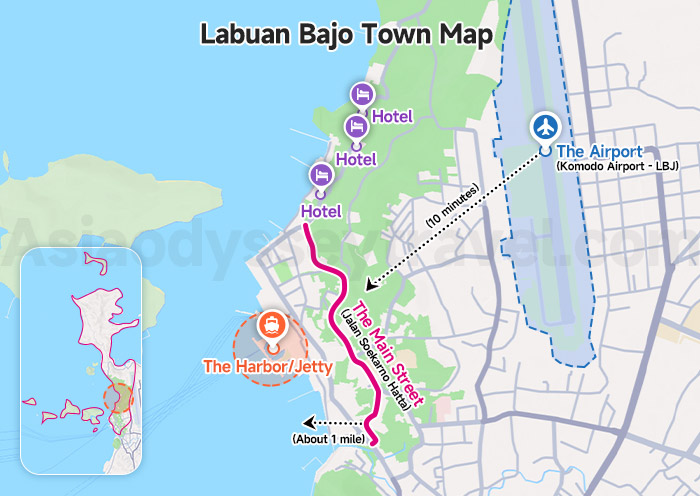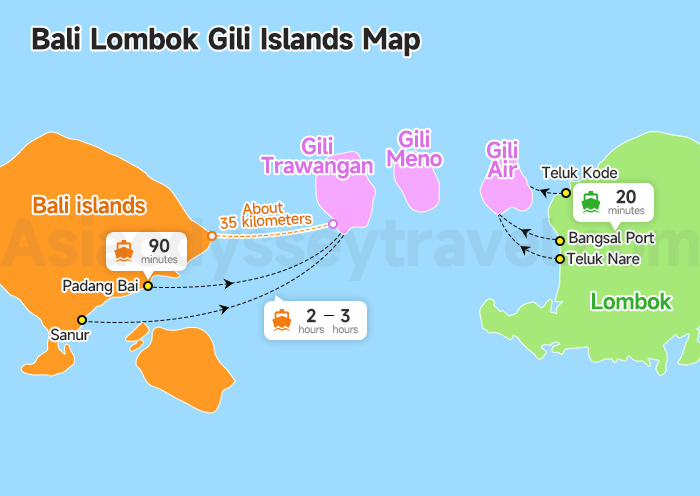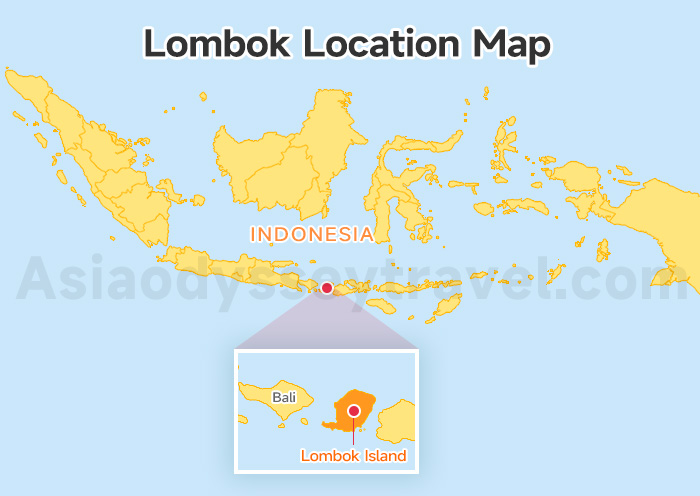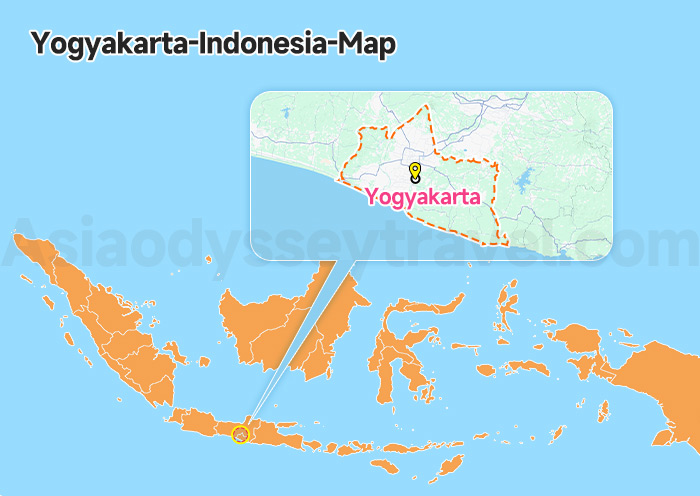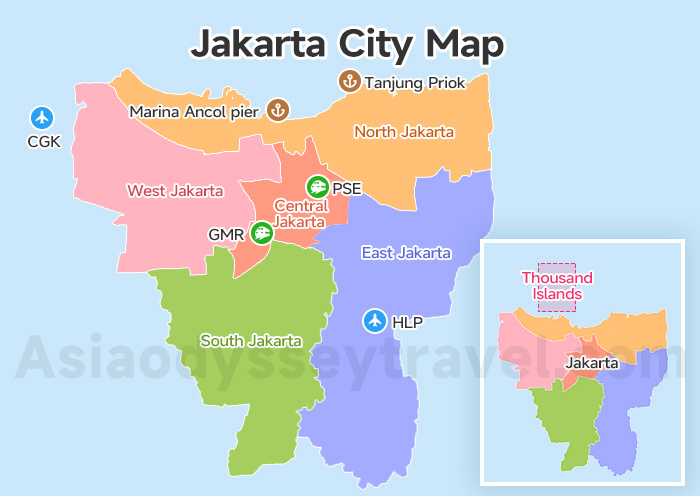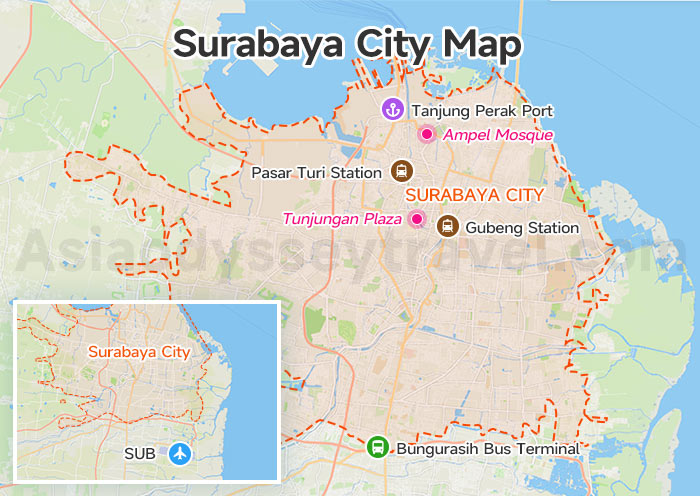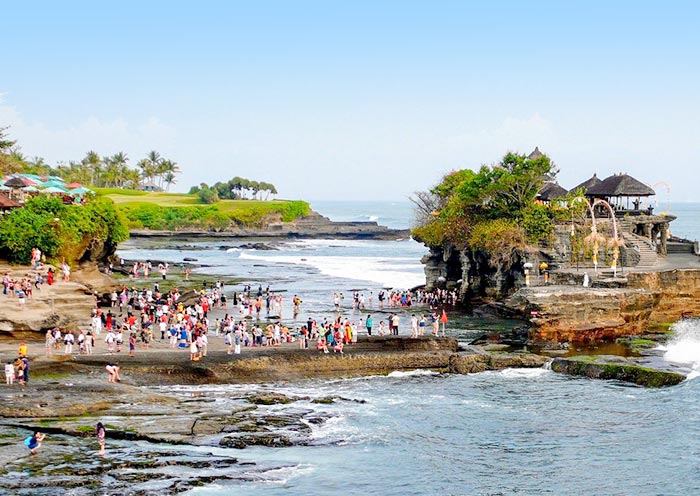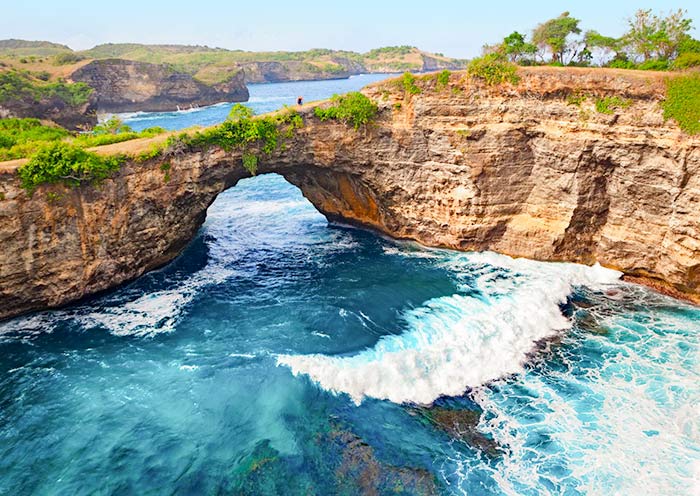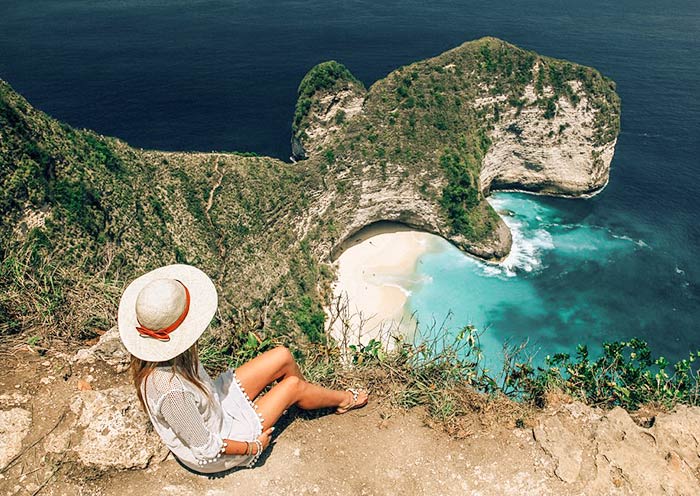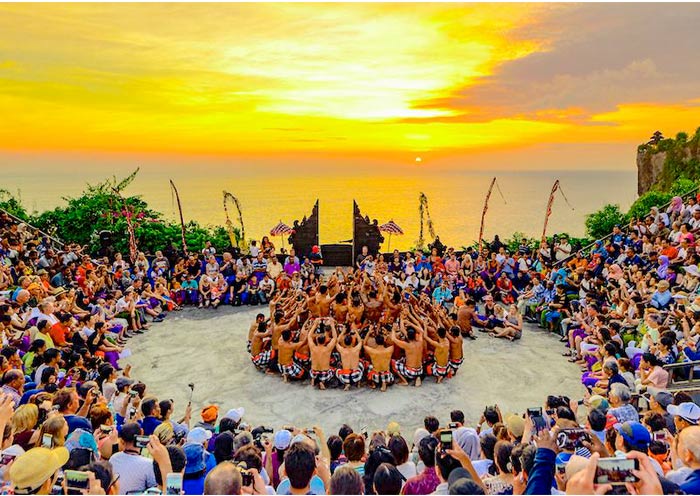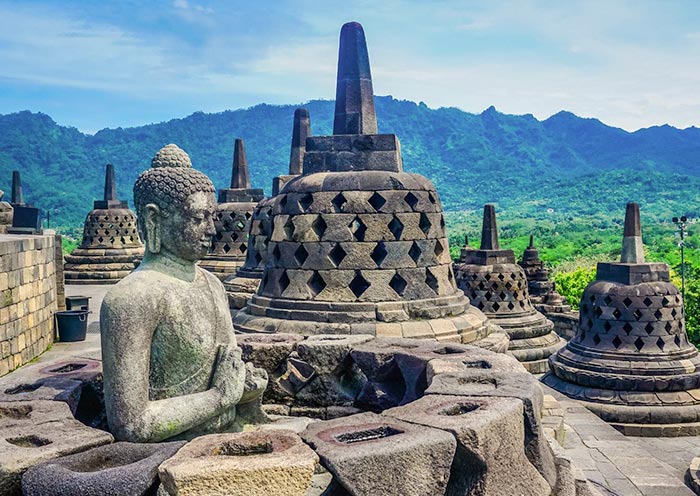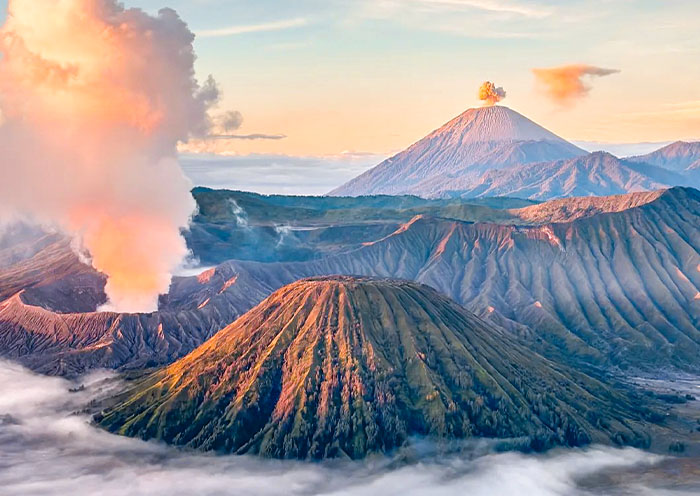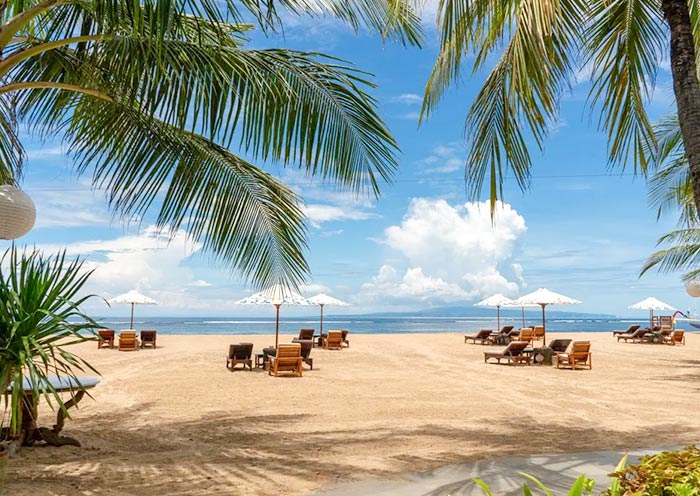Java Island on Map: Where is Java Indonesia on A Map
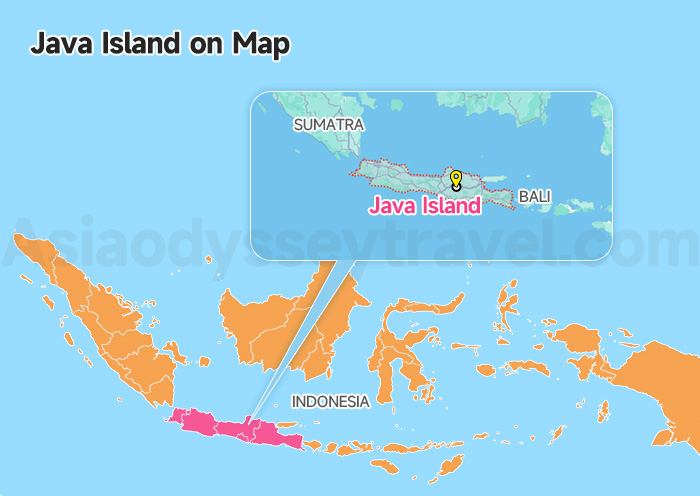
Let me help you picture exactly where Java sits in the world. Java is one of Indonesia's main islands.
On a map of the country, you'll see it positioned right in the middle of the main island chain, with Sumatra to its west and Bali to its east. Java located between the latitudes of 5° and 8° South and longitudes of 105° and 114° East.
The island sits roughly 600 miles long but only 75 to 125 miles wide. located between the latitudes of 5° and 8° South and longitudes of 105° and 114° East.
The most defining feature of Java is the volcanic mountain chain that runs through its center like a spine. The island has over 100 volcanoes, and many of them are still active.
The rich volcanic soil makes the land incredibly fertile, which is why it is the most populous island on Earth, home to more than half of Indonesia's population.
How How Geography Shapes Your Java Travel
The Central Volcanic Spine: Java exists because of volcanoes. A long chain of them—many still active—forms the spine of the island. This is the "Ring of Fire."
- This is where you find the incredible landscapes. Mount Bromo, Ijen Crater, Mount Merapi, the Dieng Plateau... all the epic adventures live along this central spine.
The Southern Plains: So, what happens when you have volcanoes? You get incredibly fertile land. The southern plains of Central Java, nourished by volcanic ash, became the cradle of Javanese civilization.
- This is why the ancient kingdoms built their monuments here. Borobudur and Prambanan exist on these plains, all within the shadow of the volcanoes.
The Northern Coast: A flat plain runs along most of Java's northern coast. This is where the big cities are. This is where the main railway line runs. Cities like Jakarta, Semarang, and Surabaya are all here.
A Tourist's Map of Java's 6 Provinces & Main Cities
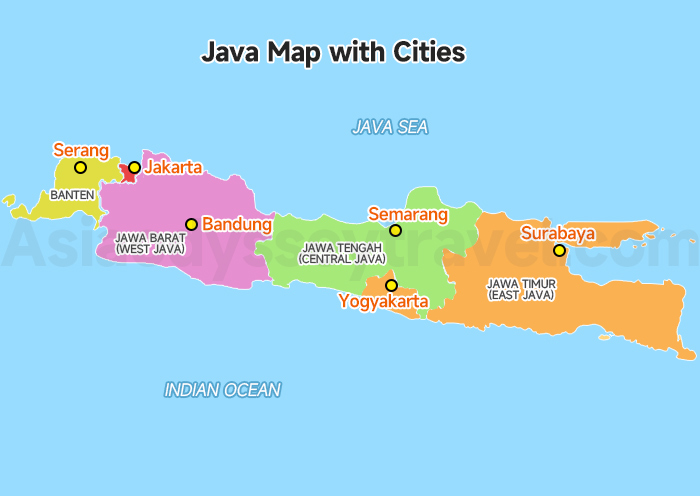
This next "map" breaks Java down into its main regions. The island is divided into 6 provinces (including two special regions). Knowing this helps you group the main cities and attractions together. It turns one giant island into three manageable tourist zones: West, Central, and East.
West Java & Jakarta: The Modern Capital & Cool Highlands
This is your most likely entry point. The massive capital city of Jakarta is here. It's a huge, fast, modern metropolis. Honestly, most tourists don't stay long.
But just south of Jakarta is Bandung, a beautiful city in the cool highlands, surrounded by tea plantations and volcanoes. It's a popular weekend escape for locals.
Jakarta Indonesia Map: Tourist Map of Jakarta City & Jabodetabek
Central Java & Yogyakarta: The Cultural Soul of the Island
This is the heart. When people dream of "classic Java," this is it. The special region of Yogyakarta (pronounced "Jog-ja-karta" and often just called "Jogja") is the star. It's an incredibly friendly city and the gateway to the world's most famous temples. This region is an absolute must-visit.
Yogyakarta Indonesia Map 2026 | Yogyakarta Map for Tourist
East Java: The Volcanic Gateway
This is the land of giants. East Java is all about epic nature and adventure. The main city is Surabaya, a huge port and industrial hub. But for tourists, the real gems are the smaller cities like Malang and Banyuwangi. These are the gateways to climbing Mount Bromo and seeing the blue fire of Ijen Crater.
Top 17 Java's Attractions: Mapped Out on Java Island
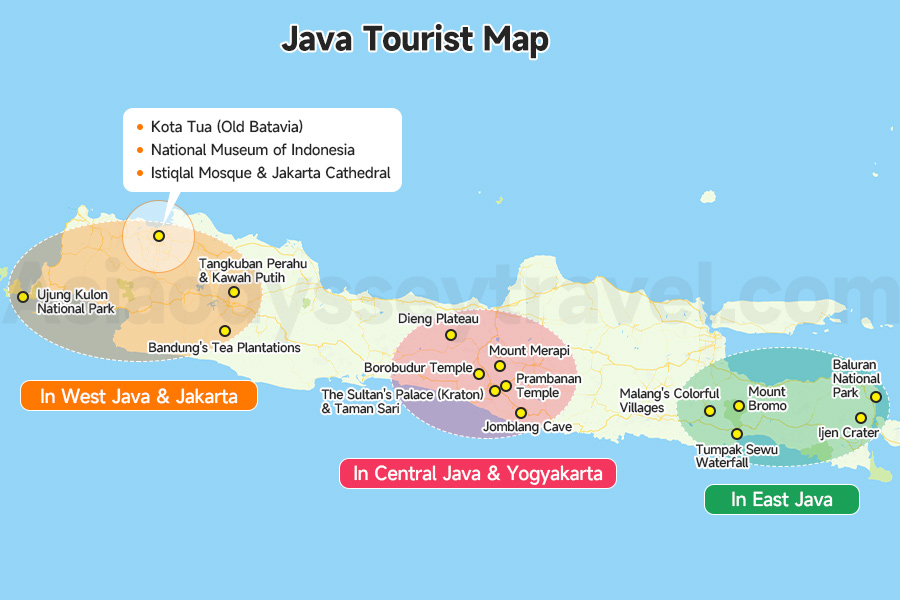
Let's put some pins on our mental map! This Java island attractions map highlights a wider array of can't-miss sights and places them within the regions we've just discussed.
This gives you a rich visual checklist, helping you see where your points of interest are located in relation to each other. Let's plot the highlights on our map, moving from west to east:
In West Java & Jakarta
Kota Tua (Old Batavia): The historic Dutch colonial heart of Jakarta, with charming squares and museums.
National Museum of Indonesia: Located in central Jakarta, this is the best place to get a deep dive into the history and ethnography of the entire archipelago.
Istiqlal Mosque & Jakarta Cathedral: Standing side-by-side, this massive mosque and beautiful neo-gothic cathedral are a powerful symbol of Indonesia's religious harmony.
Ujung Kulon National Park: A UNESCO World Heritage site on Java's southwestern tip, this park is a haven for wildlife and the last refuge of the critically endangered Javan rhinoceros. It's for the dedicated nature lover.
Tangkuban Perahu & Kawah Putih: Near Bandung, these are two of Java's most accessible volcanic craters. One you can drive up to, the other is a stunning, surreal turquoise lake.
Bandung's Tea Plantations: Escape the city heat by wandering through the endlessly rolling hills of vibrant green tea plants in areas like Ciwidey.
Jakarta Indonesia Map: Tourist Map of Jakarta City & Jabodetabek
In Central Java & Yogyakarta: Borobudur & Prambanan Are the Must-do
- Borobudur Temple: The magnificent 9th-century Buddhist mandala, a UNESCO site and a place of profound peace, especially at sunrise.
- Prambanan Temple: A breathtaking collection of tall, spired Hindu temples dedicated to Shiva, Vishnu, and Brahma. The Ramayana ballet performed here at night is magical.
- The Sultan's Palace (Kraton) & Taman Sari: The living, breathing cultural heart of Yogyakarta and the Sultan's former pleasure garden and bathing complex.
- Mount Merapi Jeep Tour: For a dose of adrenaline, take a 4x4 tour on the slopes of one of Indonesia's most active volcanoes, visiting villages affected by past eruptions.
- Jomblang Cave: An incredible adventure where you are lowered into a massive sinkhole to witness a beam of "heavenly light" illuminating the cave floor.
- Dieng Plateau: A mystical, high-altitude volcanic plateau with ancient Hindu temples, bubbling mud pools, and multi-colored lakes. It feels like another world.
Yogyakarta Indonesia Map 2026 | Yogyakarta Map for Tourist
In East Java: Mount Bromo, Ijen & More
Mount Bromo: The iconic superstar. Famous for its otherworldly sunrise view from a viewpoint, looking out over a caldera of active volcanoes shrouded in mist.
Ijen Crater: A truly unique wonder, known for its mystical blue fire (visible only at night) and the world's largest acidic crater lake of an unbelievable turquoise color.
Tumpak Sewu Waterfall: Often called the "Coban Sewu" or the "Niagara of Indonesia," this is a jaw-dropping curtain of water plunging into a jungle-clad gorge. It's a challenging but hugely rewarding trek.
Malang's Colorful Villages (Jodipan & Kampung Biru Arema): Once slums, these villages were transformed into vibrant, photogenic works of art, perfect for an afternoon stroll.
Baluran National Park: Known as the "Little Africa of Java," this park's vast savanna is home to wild buffalo, deer, and peacocks, offering a completely different landscape from the rest of the island.
Plotting Your Route: Classic Java Itinerary on a Map
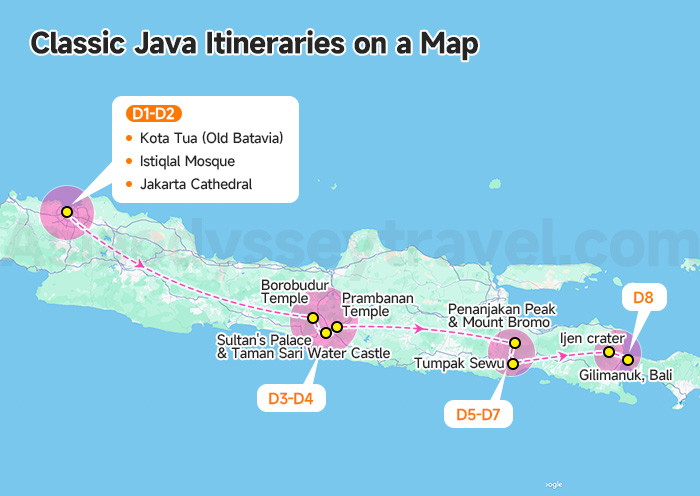
You have the regions and the attractions. How do you connect the dots? This section is your "route map." It lays out a logical, exciting way to travel across the island. This is where we turn your wish list into an actual plan.
Here is a fantastic, popular 8-day itinerary, that covers all the major highlights, from the capital city to the epic volcanoes.
Day 1-2: Jakarta Arrival & Jakarta City Tour
Your journey begins! You'll fly into Jakarta (CGK). On day 2, you explore the capital. I recommend focusing on Kota Tua, the "Old Town," to see the beautiful Dutch colonial architecture.
Nearby, you can see two of Indonesia's most important landmarks standing side-by-side: the grand Istiqlal Mosque (Masjid Istiqlal) and the beautiful Jakarta Cathedral.
Day 3-4: Yogyakarta Culture Tour
Plan a day for transfer from Jakarta to Yogyakarta. The train from Jakarta (Gambir station) to Yogyakarta is the best way to go. It's a long but comfortable ride (about 6 hours) where you'll see the countryside.
A day for highlights of Yogyakarta. The goal is to see the "big four." You could start at Borobudur Temple. Then, head back to the city to visit the Sultan's Palace (Kraton) and the Taman Sari Water Castle. Finally, end the day at Prambanan Temple for sunset.
Day 5: Yogyakarta to Mount Bromo
Today is a major travel day. The easiest way is to take a short morning flight from Yogyakarta (YIA) to Surabaya (SUB).
Your driver will pick you up from the Surabaya airport for the 3-4 hour drive to your hotel in Cemorolawang. This is the little village on the edge of the Bromo crater. Get to bed very early tonight.
Day 6: Mount Bromo Sunrise & Travel
Your wake-up call is around 3 AM. A jeep will take you to Penanjakan Peak for that world-famous sunrise. After, you'll cross the "Sea of Sand" and hike up to the Bromo crater itself. It's unforgettable. After breakfast, you'll check out and begin the (long) drive south to the area near the Tumpak Sewu waterfall.
Day 7: Tumpak Sewu Waterfall & Travel to Ijen
Get ready for one of the most incredible waterfalls in Indonesia. Tumpak Sewu is known as the "thousand waterfalls." You'll hike down to its base, which is a powerful and breathtaking experience. After the hike, you'll continue your journey east (another 4-5 hour drive) to your hotel near Mount Ijen.
Day 8: Mount Ijen to Bali
It's one more 1 AM start! This hike is to see the magical "Blue Fire" inside the Ijen crater. As the sun rises, you'll also see the stunning turquoise sulfur lake. After the hike, you'll head to the Ketapang harbor. From here, you'll take the 1-hour ferry across to Gilimanuk, Bali. You made it! You've crossed Java.
How to Get Around Java (Navigating the Map Effectively)
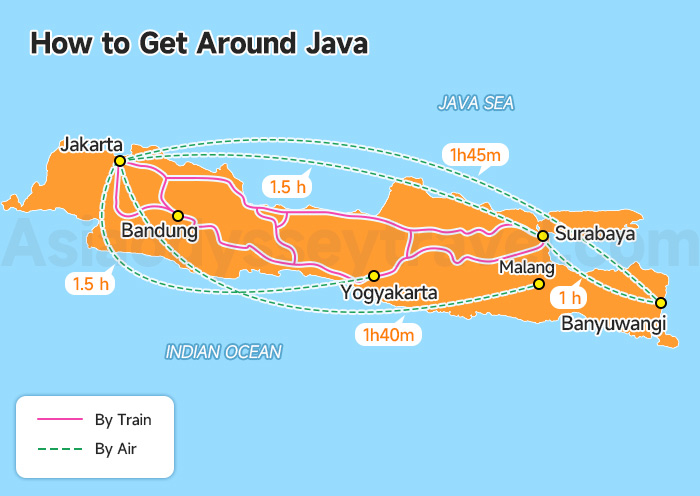
Java is a huge island, but thankfully, it has an excellent transportation network. This map is your practical guide to the best ways to travel across it.
By Train (Highly Recommended): The train is the absolute best way to travel through Java. The network is extensive, connecting all the major cities from Jakarta in the west to Banyuwangi in the east.
Key lines connect Jakarta - Bandung, Jakarta - Yogyakarta, and Yogyakarta - Surabaya (the gateway to Bromo).
By Air: For longer distances, flying is a good option. This map shows the main airports: Jakarta (CGK), Yogyakarta (YIA), and Surabaya (SUB). There are many daily flights between these cities.
By Private Car/Bus: You cannot take a train to the top of a volcano. For the Bromo and Ijen portions, you will need to use road transport.
The easiest way is to hire a private car and driver as part of a tour package provide by Asia Odyssey Travel. This is very common and affordable. They will handle the difficult mountain roads and the 4x4 jeep transfers while you rest.
Java transportation Map: Connecting to Other Islands
This is your "exit map." You're at the end of your Java journey, and you're ready for the next island. This section answers the most common question I get: "What is the best way to get from Java to Bali?"
Java & Bali Map
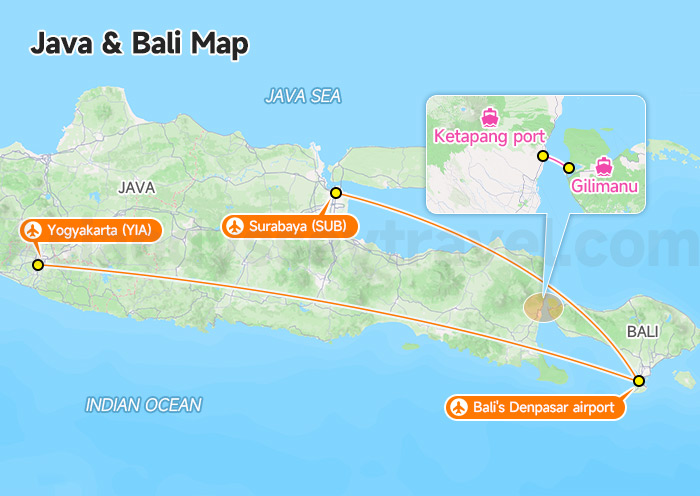
This is the most well-trodden path in Indonesian tourism. You have two main choices.
By Ferry: The Ketapang to Gilimanuk Route
- This is the classic overland route. From the easternmost town in Java, Banyuwangi (where the Ketapang port is), you take a public ferry to Gilimanuk on the western tip of Bali.
- Ferries run 24/7, departing every 15-30 minutes. The crossing itself only takes about 1 hour.
- From Gilimanuk, you can then take a bus or private car to your final destination in Bali (e.g., Ubud, Canggu, Seminyak).
By Flight: Flying from SUB or JOG to DPS
- If you don't want the long overland journey through East Java, or if you end your trip in Yogyakarta, flying is the easiest option. You can take a quick, one-hour flight from Surabaya (SUB) or Yogyakarta (YIA) directly to Bali's Denpasar airport (DPS).
Java to Lombok & Komodo
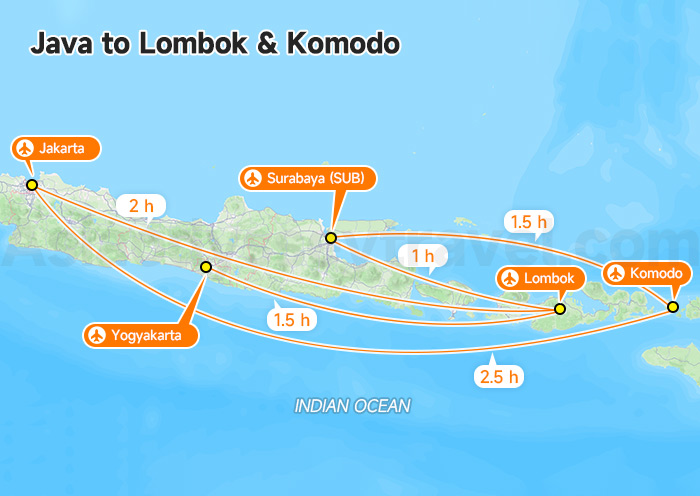
Want to venture even further east? Java is a great launchpad. The only practical way to get to Lombok (Airport: LOP) or Labuan Bajo (LBJ), the gateway to the Komodo Islands, is by flying. You can find direct flights from major Javanese hubs like Jakarta (CGK) and Surabaya (SUB).
Komodo Map: Komodo Island Map, Komodo National Park Map
Labuan Bajo Map | Labuan Bajo Indonesia Map for Tourist (2026)
Lombok Indonesia Map: Island Tourist Map with Kuta, Mt. Rinjani & Beaches
Explore Indonesia with Asia Odyssey Travel – Your Trusted Asia Travel Experts
Welcome to Indonesia! Plan your holiday with Asia Odyssey Travel. We are a leading travel company in Asia with over 10 years of experience.
We are experts at organizing trips across Southeast Asia, whether you want a deep tour of Indonesia or a multi-country adventure. With our experience and strong network, we make sure your trip is safe, smooth, and perfectly planned.
Pick Your Perfect Trip Below:
✅ Indonesia Tours: See all our best travel plans for the whole country.
✅ Bali Tours: Our most popular trips to the famous "Island of the Gods."
✅ Departing from Asia & Pacific: › Bali Tours from Singapore › Bali Tours from Malaysia › Bali Tours from Australia › Bali Tours from India › Bali Tours from Philippines › Bali Tours from Nepal
✅ Departing from North America: Bali Tours from USA · Bali Tours from Canada
Contact us today to start planning your Indonesia & Southeast Asia journey!

